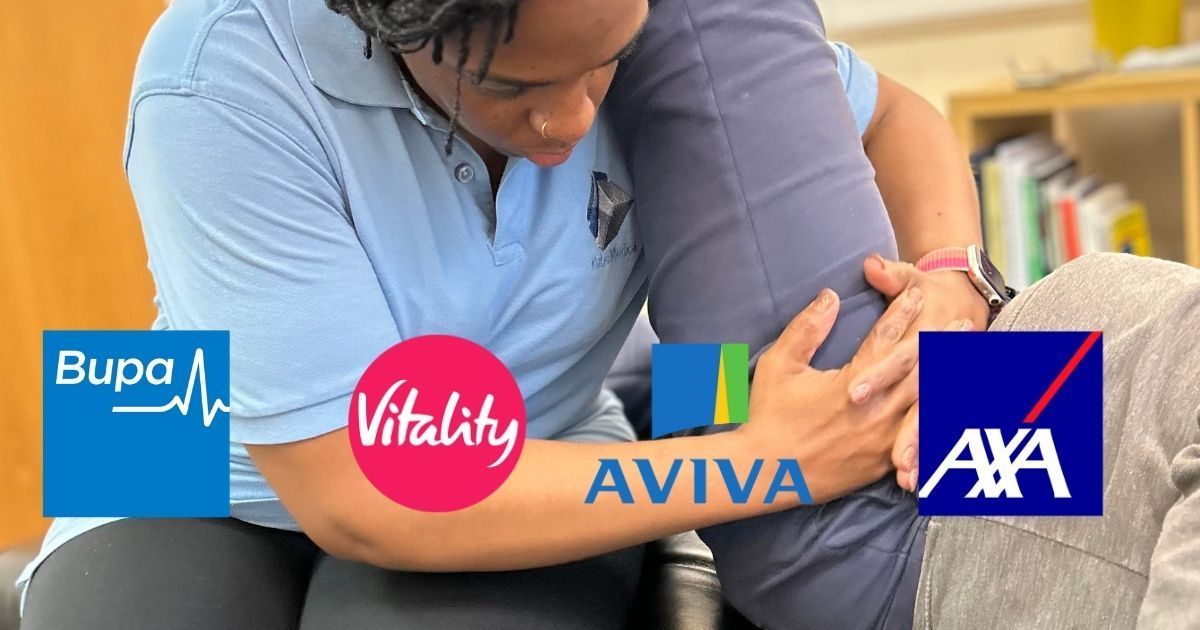How much does it cost to visit?
Patrick Campbell • 2 January 2021
When a new Chiropractic and Osteopathy patient contacts us, one of their first questions is “How much are appointments?” This article explains a bit more about why that isn’t such a simple question.
When patients ask “how much?” what they really mean is “how much will it take them to get out of pain?” The answer is a combination of the price of each treatment and how the number of treatments that are needed. In 2020, our average new patient completing their treatment plan spent £354.46 in the year, so this is a fairly good guide as to what your treatment might cost.
How much vs How many
The biggest single factor in the overall cost of treatment is not the price per treatment, but the number of treatments completed. The NHS website offers some benchmarks for
Chiropractic and
Osteopathy
treatment prices. They suggest Chiropractic appointments usually cost around £30 to £80 per session and Osteopathy appointments will typically range from £35 to £50 for a 30 to 40 minute session. These ranges are broadly consistent with our pricing structures and those of our local competitors.
Treatment prices also differ within a clinic. Factors affecting price include the type and length of the treatment, and the skills and experience of the practitioner. For example, the first appointment is usually about twice as long to allow your practitioner to both assess and treat you, so it is more expensive than subsequent appointments. Our Clinical Lead appointments are about 20% higher than our standard appointments, reflecting their experience, and post-graduate qualifications, which are often costly in both financial terms and in time for the practitioner.
It is also important to recognise that each patient is different in many respects. Most important of these are the issues affecting them that bring them to us in the first place, and what their desired outcome is.
For these reasons, we think it is important to have a more detailed conversation about why a prospective patient is interested in treatment, rather than simply firing over a price list.
A final word on how much vs. how many: Our average represents, depending on the practitioner, approximately one initial assessment, followed by six follow up appointments. As a guide, this would be a reasonable estimate of the number of treatments required for a typical patient.
Reputation and culture
If price is not a reliable indicator for choosing where to be treated, look instead for a strong reputation and indications of a good culture:
- Have a look for online reviews and see what previous patients have to say.
- Don’t be afraid to walk away after the first appointment, especially if you have been drawn in by a cheap deal. If you do not get on with your practitioner, try a different one before you make a large financial commitment to one with whom you don’t feel comfortable.
- Discuss treatment options to get an expectation of what your experience will be like before booking in.
What if I can’t afford treatment?
Unfortunately, not everyone can afford the treatment plan they need to achieve their goals. This does not mean they cannot get help, but this should be built in when setting the treatment goals at the outset. Where the overall cost is a critical factor, discuss this with your practitioner.
Taking the above “average” example, a practitioner may set out a treatment plan of six treatments over several weeks, with less time between treatments at the start. When we see patients for whom cost is a barrier to treatment, one of two things usually happens when it isn’t discussed up front:
- The patient books in the treatment plan and attends the first couple of appointments then cancels or fails to show up. While they may feel some benefit from their treatments, the improvement is unlikely to be sustained.
- The patient doesn’t book in and either never comes back, or tries to make up their own treatment plan, which undermines the benefit of treatment.
If cost concerns are raised at the start, the practitioner can set out a treatment plan that the patient can actually commit to, maximising the value they gain from treatment.
What happens after a treatment plan?
Our patients can be broadly grouped into three categories.
- Acute: Most people come to us because they are in pain due to an acute issue (one that has just arisen), or have a long-term (chronic) issue. Their goal is typically to get out of pain. Many patients complete this phase of treatment and decide they will rebook if they need to. Some move on to rehabilitation.
- Rehabilitation: During a rehabilitation treatment phase, we work with patients to improve their resilience to the environmental factors that may lead to pain returning. For example, patients’ jobs may contribute to their pain (e.g. repeated lifting leading to strains). Rehabilitation helps to correct underlying weaknesses that may lead to future flare ups.
- Maintenance: We have many patients on our books who come in for regular Chiropractic, Osteopathy or massage treatments, keeping them in the best possible condition. Regular means different things for different people. At a minimum, and in accordance with Royal College of Chiropractors Quality Standards, this would be at monthly intervals.
When calculating our “average” cost, we included those patients who have moved on from acute treatment to further phases. About a quarter of all the patients included spent less than £200 on their treatment in total.
How does the multidisciplinary approach help?
It may help to understand a bit more about our philosophy. We take a multidisciplinary approach because we recognise that drawing on multiple skillsets and techniques can lead to improved outcomes for our patients. The majority of the patients from which our average was taken received treatment from more than one discipline within the clinic.
Where patients have complicated issues, we may refer patients to Clinical Lead practitioners. The advantage of doing this within the clinic is that patients do not have to pay for a new patient appointment, as they would if they had been referred to an external expert. We are also able to fully support the different phases of treatment mentioned above, using practitioners whose skills are well matched to the patients’ needs in each phase.
This saves money for patients who no longer need an initial consultation with other Chiropractors or Osteopaths. It saves them time and money that may have been spent trying other practitioners and travelling from one clinic to the next.
Where we used to refer externally to massage therapists, Physiotherapists and rehabilitation specialists, we now have the skills we need in-house, so that treatment plans can be discussed face-to-face, patient notes shared and, most importantly, continuity maintained.
This keeps the costs down for our patients, as they get the treatment they need at the right time, without overpaying.
How do I know what I need?
The first step is to speak to us. If you have any questions, our helpful admin team is trained to answer the questions we usually receive. For more complicated questions, we may take a little longer to answer, but we are happy to address queries to get you comfortable before attending your first appointment.
All of our Chiropractors and Osteopaths are trained to work as a team within the clinic. You don’t need to feel under pressure to choose the right practitioner up front. They will take the time to understand your goals, and develop a treatment plan that helps you achieve them, using whatever capabilities you need. To help you choose, we have published biographies and video introductions on our Meet the Team
page.
And finally…
We frequently publish new content on our website, on Facebook
and on our YouTube
channel, but if you need further information, please get in touch with us.

At Kube medical, we believe high-quality physiotherapy should be accessible, comfortable, and convenient. That’s why we provide professional home-visit physiotherapy services, helping you recover in the comfort of your own home and at a time that fits your lifestyle. Whether you're recovering after surgery or trying to fit treatment around a busy schedule, our personalised approach ensures you feel supported, motivated and confident every step of the way.

As the days get shorter and the air turns crisp, many of us start dreaming about fresh powder, mountain air, and that first exhilarating run of the ski season. But before you dust off your boots, it’s worth thinking about one crucial thing: your body’s readiness. Whether you’re a seasoned skier eager to hit the slopes from day one, or an occasional skier looking to make the most of a long-awaited trip, a little “pre-hab” — preparing your body in advance — can make all the difference between an enjoyable week on the mountain and one cut short by fatigue or injury.

There’s no easy way to put it — the sudden closure of Private Midwives has left a real void, both professionally and personally, for many highly experienced tongue tie practitioners. It’s disrupted livelihoods, interrupted the continuity of care for families, and forced many to face a wave of uncertainty.








